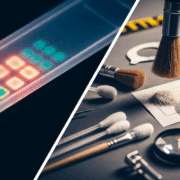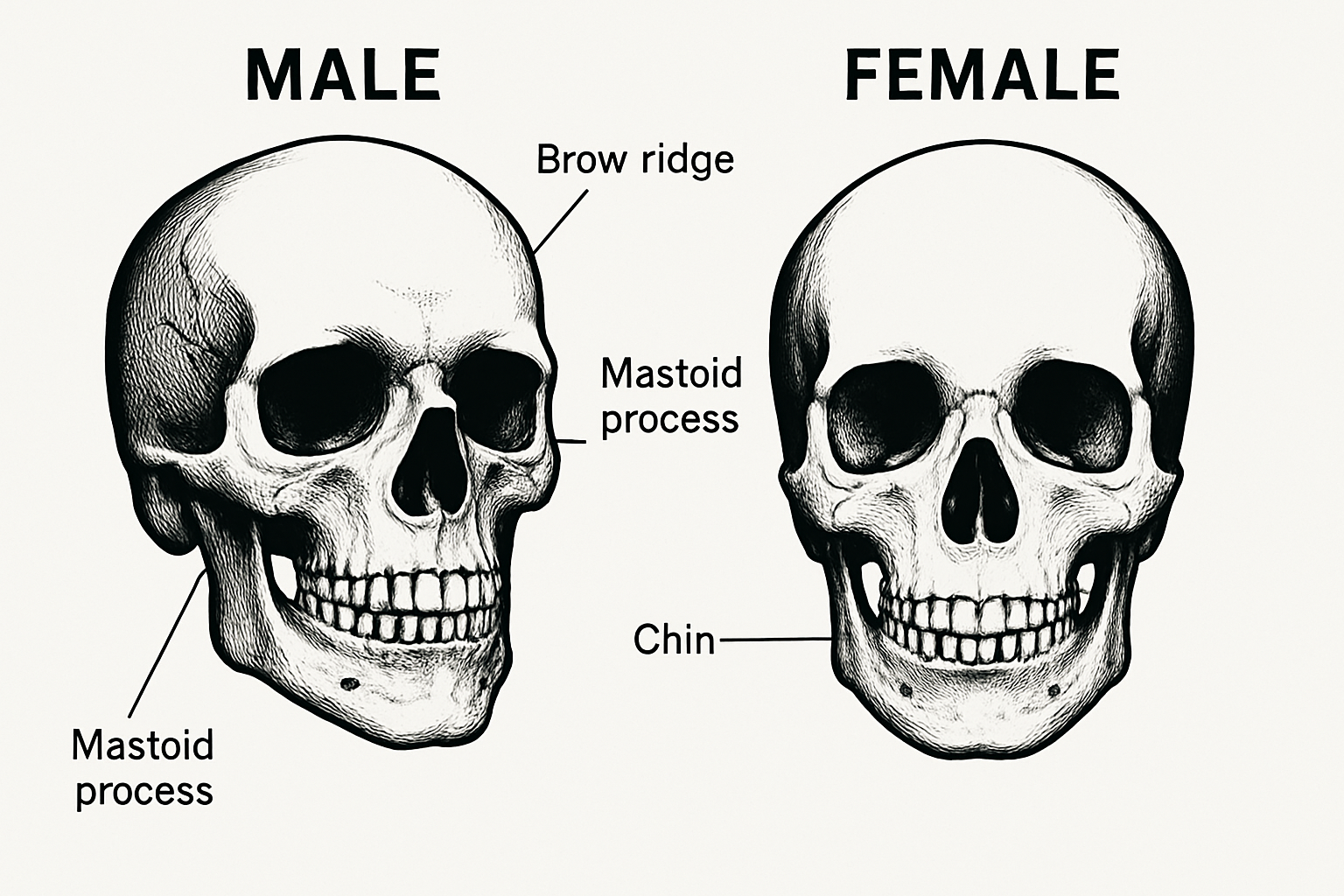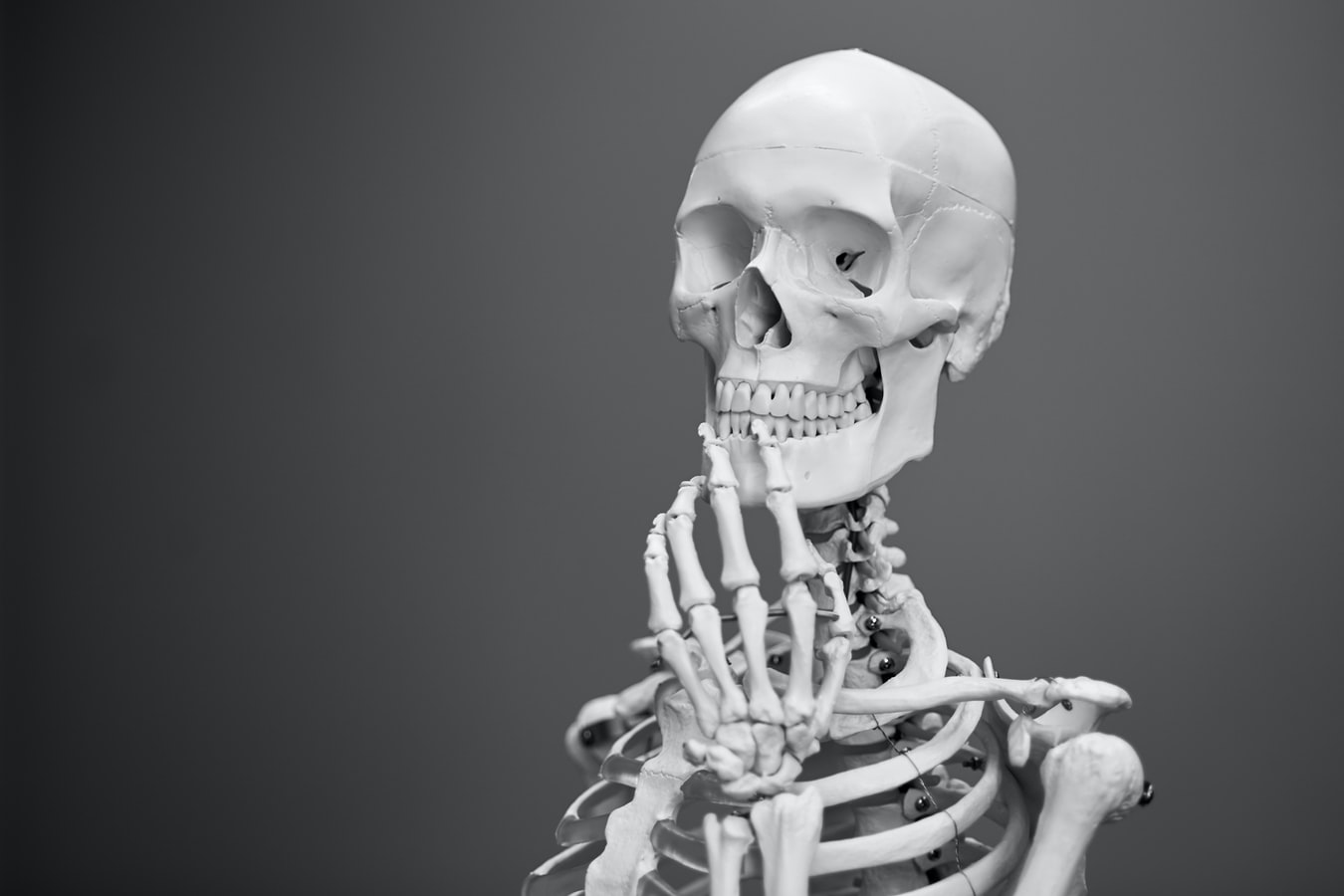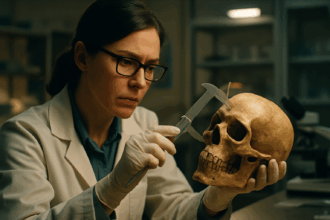Have you ever wondered how forensic experts identify individuals when traditional methods fall short? One of the unsung heroes in forensic anthropologyForensic anthropology is a special sub-field of physical anthropology (the study of human remains) that involves applying skeletal analysis and techniques in archaeology to solving criminal cases. Read Full Definition is the study of frontal sinus variation. The frontal sinus, a cavity in our forehead, is as unique to each person as a fingerprint. Recent research by Austin A. Shamlou and Dr. Sean D. Tallman from Boston University has shed new light on what influences this uniqueness, providing valuable insights for forensic science Discover the fascinating field of Forensic Science, the application of scientific principles to legal matters. This post delves into its many disciplines, from DNA analysis to crime scene investigation, its importance in the justice system, Read Full Definition.
Discover the fascinating field of Forensic Science, the application of scientific principles to legal matters. This post delves into its many disciplines, from DNA analysis to crime scene investigation, its importance in the justice system, Read Full Definition.
- Understanding the Frontal Sinus
- Key Findings: What’s New?
- Delving Deeper into the Frontal Sinus
- The Role of Computed Tomography Scans
- Elliptical Fourier Analysis: Making Sense of Shapes
- Exploring Sexual Dimorphism and Population Affinity
- The Idiosyncratic Nature of the Frontal Sinus
- Implications for Forensic Anthropology
- Challenges and Future Directions
- The Broader Impact on Forensic Science
- Conclusion: Embracing Uniqueness
In this Article:
- Understanding the Frontal Sinus
- Key Findings: What's New?
- Delving Deeper into the Frontal Sinus
- Implications for Forensic Anthropology
- Challenges and Future Directions
- The Broader Impact on Forensic Science
- Conclusion: Embracing Uniqueness
Understanding the Frontal Sinus
The frontal sinus is an air-filled cavity located within the skull’s frontal bone, just above the eyebrows. It develops during early childhood and reaches its full size by adulthood. Interestingly, no two frontal sinuses are alike—even identical twins have different sinus patterns! This uniqueness makes it an invaluable tool for forensic anthropologists trying to identify unknown remains.
The Study at a Glance
Researchers Austin A. Shamlou and Dr. Sean D. Tallman conducted a comprehensive study titled “Frontal Sinus Morphological and Dimensional Variation as Seen on Computed Tomography Scans” (Shamlou & Tallman, 2022). Their goal was to explore whether factors, like assigned sex and population affinity (ancestral background), influence the shape and size of the frontal sinus.
Methodology: How They Did It
The study analyzed the computed tomography (CT) scans of 325 individuals aged 20–50. These individuals represented diverse ancestral backgrounds, including African, Asian, European, and Latin American-derived groups. The sample also included both assigned female at birth (AFAB) and assigned male at birth (AMAB) individuals.
To analyze the shape of the frontal sinuses, the researchers used a technique called Elliptical Fourier Analysis (EFA). This mathematical method quantifies complex shapes, allowing for precise"Precise" refers to the degree of closeness or consistency between multiple measurements or values taken under the same conditions. It indicates how well these measurements agree with each other, regardless of whether they are accurate Read Full Definition comparisons between different sinuses. They also measured the dimensions of each sinus—height, width, and depth—using specialized software.
Key Findings: What’s New?
- Uniqueness of Shape: The study confirmed that the shape of the frontal sinus is highly unique and not significantly influenced by assigned sex or population affinity. This reinforces the sinus’s value in forensic identification.
- Dimensional Differences: While the overall shape didn’t vary significantly, dimensions like height and depth did show differences when considering both assigned sex and population affinity. Specifically, AMAB individuals tended to have larger frontal sinuses in terms of depth and height compared to AFAB individuals.
- Impact of Sexual Dimorphism

- Population Affinity: The study found that population affinity alone did not significantly impact frontal sinus variation. This suggests that while genetics play a role, the sinus’s uniqueness transcends ancestral background.
Delving Deeper into the Frontal Sinus
The frontal sinus isn’t just an anatomical curiosity; it’s a window into our individuality. Located within the frontal bone, these cavities are lined with mucous membranes and connected to the nasal passages. Their development begins in the womb but doesn’t become radiographically visible until age five. By adulthood, the frontal sinus has typically reached its full size and remains relatively stable unless altered by trauma or disease.
The Role of Computed Tomography Scans
Computed tomography (CT) scans played a pivotal role in this study. CT scans offer detailed, three-dimensional images of the body’s internal structures, allowing for precise measurements of the frontal sinus. Unlike traditional X-rays, CT scans can differentiate between the complex layers of bone and soft tissue, providing clearer images for analysis.
By analyzing CT scans from a large and diverse sample, the researchers could accurately study the frontal sinus’s morphological (shape-related) and dimensional (size-related) variations. This level of detail is crucial for forensic anthropology, where even slight differences can make or break an identification.
Elliptical Fourier Analysis: Making Sense of Shapes
To quantify the unique shapes of the frontal sinuses, the researchers employed Elliptical Fourier Analysis (EFA). EFA is a mathematical method used to break down complex shapes into quantitative data Information in analog or digital form that can be transmitted or processed. Read Full Definition. By converting the sinus outlines into numerical coefficients, EFA allows statistical comparisons between individuals.
Information in analog or digital form that can be transmitted or processed. Read Full Definition. By converting the sinus outlines into numerical coefficients, EFA allows statistical comparisons between individuals.
This method is particularly useful when dealing with irregular organic shapes that don’t conform to standard geometric figures. In forensic anthropology, where precise comparisons are necessary, EFA provides a robust tool for analyzing morphological variation.
Exploring Sexual Dimorphism and Population Affinity
One of the study’s key objectives was to determine whether sexual dimorphism and population affinity influence frontal sinus variation. Sexual dimorphism refers to the differences in size and form between males and females of the same species. Population affinity relates to the ancestral background or geographic origins of individuals.
Previous studies have suggested that environmental factors, such as climate adaptations, could influence sinus development. For instance, populations from colder climates might have differently developed sinuses compared to those from warmer regions, possibly due to respiratory adaptations.
However, the findings of Shamlou and Tallman challenge these assumptions. While the sinus’s dimensions showed some variation when considering both sex and ancestry, the shape remained consistently unique across all groups. This suggests that other factors, possibly genetic or developmental, play a more significant role in shaping the frontal sinus.
The Idiosyncratic Nature of the Frontal Sinus
The study reinforces the idea that the frontal sinus is highly idiosyncratic—that is, it varies greatly between individuals with no predictable pattern based on sex or ancestry. This uniqueness is what makes the frontal sinus so valuable in forensic identification.
In practical terms, this means that forensic experts can rely on frontal sinus patterns as a form of biometric identification. By comparing antemortem CT scans or X-rays with postmortem images, they can establish positive identifications even when other methods are unavailable or inconclusive.
Implications for Forensic Anthropology
The findings of this study have significant implications:
- Enhanced Identification Methods: Understanding that the frontal sinus’s shape is not influenced by sex or ancestry bolsters its reliability as a tool for positive identification.
- Expert Witness Testimony: The unique nature of the frontal sinus can strengthen expert testimony in legal contexts, as it provides a scientifically robust method for identification.
- Future Research Directions: The study opens avenues for further research into why the frontal sinus develops uniquely, considering factors like genetics and environmental influences during growth.
Challenges and Future Directions
Despite the advances, the study also highlights areas needing further research. For instance, the exact reasons why the frontal sinus develops so uniquely remain unclear. Is it purely genetic, or do environmental factors during growth and development play a role?
Moreover, as imaging technology continues to improve, so does the potential for even more precise analyses. Future studies might explore the use of 3D modeling or advanced imaging techniques to further understand the frontal sinus’s complexity.
The Broader Impact on Forensic Science
The implications of this research extend beyond academic interest. In forensic casework, time is often of the essence. Having reliable methods for identification can accelerate investigations and bring closure to families. The confirmation of the frontal sinus’s reliability enhances the forensic toolkit, providing another avenue for positive identification.
Additionally, this research contributes to the legal robustness of forensic methods. In court, expert testimony must withstand rigorous scrutiny. Demonstrating that the frontal sinus is both unique and unaffected by variables like sex and ancestry strengthens its admissibility as evidence Evidence is any form of proof, such as objects, materials, or scientific findings, presented to establish or disprove a fact in a legal proceeding. It is used to reconstruct events and link or exclude individuals Read Full Definition.
Evidence is any form of proof, such as objects, materials, or scientific findings, presented to establish or disprove a fact in a legal proceeding. It is used to reconstruct events and link or exclude individuals Read Full Definition.
Conclusion: Embracing Uniqueness
The frontal sinus reminds us of the human body’s incredible variability. Each person’s sinus is a silent signature etched into bone, waiting to tell a story. Thanks to the work of researchers like Shamlou and Tallman, we’re better equipped to read these stories and use them to advance forensic science.
Shamlou, A. A., & Tallman, S. D. (2022). Frontal Sinus Morphological and Dimensional Variation as Seen on Computed Tomography Scans. Biology, 11(8), 1145. https://doi.org/10.3390/biology11081145
This groundbreaking study was conducted by Austin A. Shamlou and Dr. Sean D. Tallman from the Department of Anatomy & Neurobiology and the Department of Anthropology at Boston University, respectively.
MDPI’s open-access policy ensures that this research is freely available to everyone. Under the Creative Commons Attribution License (CC BY), readers can access, share, and reuse the article as long as proper credit is given to the original authors.
Note: Contents may be edited for style and length.
The uniqueness of our bodies is truly fascinating. Have you ever considered how aspects like your frontal sinus could be uniquely yours? Share your thoughts or questions in the comments below!











